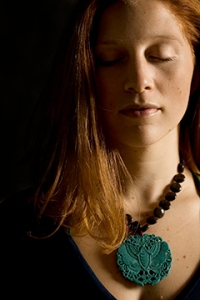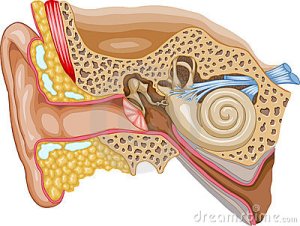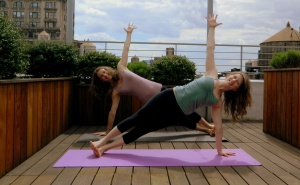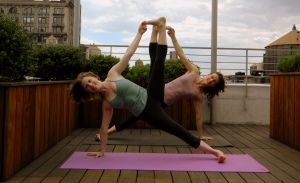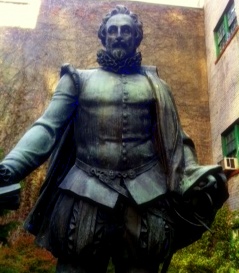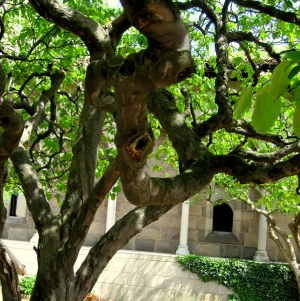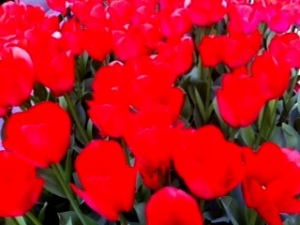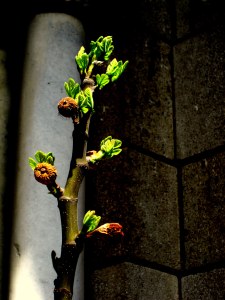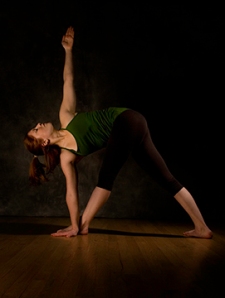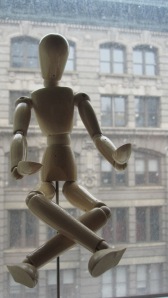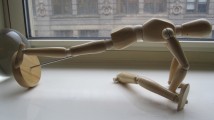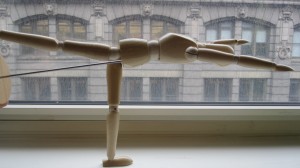What if you really could have more energy, your skin could be luminous, and all of those little health complaints you had could go away? But there wasn’t any quick fix? What if you actually had to change your lifestyle and eating habits for such a miracle to occur? Would you have the discipline, drive or desire?
I’ve been sharing with my classes this week some really interesting information about the body, what it is exactly, and how our choices shape our body. I think this discussion can help to shed some light for anyone who is interested in the nature-vs-nurture debate, and hopefully it can help to sum up how much control we have in the equation of our health and well-being.
Earlier this week, I was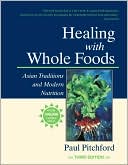 telling my mom about this cleanse I am doing, and at first she asked if it was like one of those cleanses that you can buy in the grocery store, which clean out your system (if you know what I mean…) This however is not the kind of cleanse that I am doing. I am doing an Ayurvedic cleanse for two months, which is helping to restore balance to my system.
telling my mom about this cleanse I am doing, and at first she asked if it was like one of those cleanses that you can buy in the grocery store, which clean out your system (if you know what I mean…) This however is not the kind of cleanse that I am doing. I am doing an Ayurvedic cleanse for two months, which is helping to restore balance to my system.
Two months! You might be saying… which is definitely what my first reaction was. Especially when you find out that this cleanse requires:
- No alcohol
- no coffee
- no sugar
- no cheese
- no hot spices
- no garlic or onions
- no citrus
- no vinegar or anything fermented
- no tomato
- no sesame seeds
- no fried foods
- no red meat or seafood
 Ok, now try to go to a restaurant and see what you can eat. This diet is the definition of socially awkward. The purpose of all of this is to reduce the acid in my system by not eating any foods which are acidic. This may not be the appropriate cleanse for everyone, but it is for me.
Ok, now try to go to a restaurant and see what you can eat. This diet is the definition of socially awkward. The purpose of all of this is to reduce the acid in my system by not eating any foods which are acidic. This may not be the appropriate cleanse for everyone, but it is for me.
In addition, I am making a hot drink made from boiling water with fennel seeds, cumin seeds, coriander seeds and a pinch of cinnamon, and I am taking special Ayurvedic Herbs. Cooling foods like avocado, cucumber, watermelon, and coconut are particularly helpful for this transformational process.
I am now five weeks into the cleanse and I feel amazing. It’s getting easier not to cheat, because every time I do I don’t feel as well in the morning. I thought it would be a nice time to take a slightly more in depth look at how what we eat has an effect on the body. I will also try to answer the question: What is the body, exactly? This is really fascinating & I will try to make it clear and interesting…
According to the yogis the body is made up of five layers.
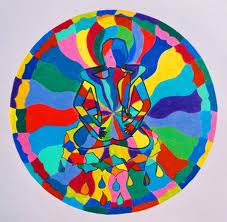 1. The Annamaya Kosa/The Food Body.
1. The Annamaya Kosa/The Food Body.
How it works: You eat arugula, chew it well, it makes its way into your digestive system where it is further broken down into its chemical, component parts – let’s say Vitamin D. This vitamin D then eventually makes its way into the cells of your body. The food you eat and liquids your drink helps to build the shape of your cells and therefor the shape of your body. This layer also constitutes all aspects of your body which can be visible to the naked eye.
Sampling of how The Annamaya Kosa/Food Body applies to yoga class: If you don’t have enough protein in your diet, you won’t have the building blocks of strength and endurance that you will need to create the poses.
 2. The Pranamaya Kosa/The Breath Body
2. The Pranamaya Kosa/The Breath Body
How it works: You breathe in air through your mouth or nose and into your lungs. Your lungs are able to pull out the Prana/the elements in the air that provide a source of energy for the body, which are then circulated into the cells of your body. The Breath Body could be defined as all of the gases in the body, which have come in through the breathing mechanism and which will leave through that same door we call the nostril.
Sampling of how The Pranamaya Kosa/Breath Body applies to yoga class: One of the reasons we breathe through the nose and create a whispering sound in the throat as we breath, Ujjayi Pranayama, is because it warms the air as it comes into the body. This warming of the air is an equivalent to cooking or chewing our food. In other words – this breathing technique makes it easier for the body to digest the air. Also, breathing with a steady rhythm helps to regulate circulation, which will aid the cells in getting the freshly oxygenated blood that they need and getting rid of the carbon dioxide that the plants need. (note: this is not being sited from a scientific study but is an observation I’ve made in my own practice and those of other practitioners I’ve had the privilege of observing over the past thirteen years.)
Pause>>> So far we can see how The Food Body is pretty tangible and we can all agree that, yes, some part of what we eat will be the building blocks for the body we inhabit. Furthermore, ok, we can kind of agree that, yes, what we breathe in clearly becomes a part of our cells if even just for a little while. So we can wrap our heads around the idea of The Breath Body. >>>
 3. The Manomaya Kosa/The Mental Body
3. The Manomaya Kosa/The Mental Body
How it works: When we take in ideas, experiences, knowledge etc. through our senses where does this go? Into the third layer of the body: The Manomaya Kosa. If I watch a video on Ted.com and it talks about the importance of trial and error in solving complex problems I have stored this idea somewhere in my brain, and I can talk about it later, at dinner with friends. If I learned how to type when I was in elementary school some circuits were set up between my brain and my fingers that allows my fingers to feel the keyboard and know where the letters are, which allows my brain to translate my thoughts into written words. So these stored bits of information that I have leaned in this lifetime all are a part of this body that I am now living in, and this is what we call, The Manomaya Kosa, or The Mental Layer of the Body. A little more subtle, but actually really cool to think about.
Sampling of how The Manomaya Kosa/Mental Body applies to yoga class: When we hear the teacher tell us to move the top of our thighbones back into our hamstrings and the sacrum forward into our belly we know where these landmarks are in the body, we know what all of these directions mean, and the body can follow the instructions as they are being heard.
 4.Vijnanamaya Kosa/The Wisdom Body
4.Vijnanamaya Kosa/The Wisdom Body
How it works: This one is really interesting! The Wisdom Body could be considered the equivalent to our DNA. It is the information that the cells of our body were born with. It is the wisdom of being a living being that has been passed down to us generation after generation. This layer of the body is how the digestive system knows how to digest; how the circulatory system knows how to circulate; how the reproductive system knows how to reproduce. Something about our DNA is innate within our cells.
Sampling of how the Vijnanamaya Kosa/Wisdom Body applies to yoga class: Hmmm, let me think about this for a moment… perhaps there is wisdom in our dna which can be put to use only in certain environments. According to the third pada/chapter of the yoga sutras there are many siddhis/mystic powers like insight, knowledge of the past and future, understanding the communication of all creatures, reading people’s minds, invisibility… which can be unlocked through the system of yoga. It also could be that through the practice of yoga we strengthen the body while also making it more spacious and mobile, which we can feel on the grand scale in the mobility of our spine, but perhaps this is also true on the cellular level. If I were a double-helix strand of DNA I think I would want some space to work in, as well as some strength to make sure my work could be upheld.
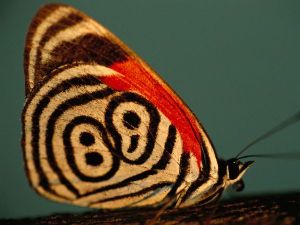 5. The Anandamaya Kosa/The Bliss Body
5. The Anandamaya Kosa/The Bliss Body
How it works: This most subtle layer of the body might explain why you get the chills when you hear something that is true. It is the least tangible layer of the body. It is whatever part of you that you know is a part of you that you cannot attribute to those other parts I already mentioned. (How about that for a definition?)
Sampling of how the Anandamaya Kosa/Bliss Body applies to yoga class: This could be the role of your imagination, your intention or your prayer.
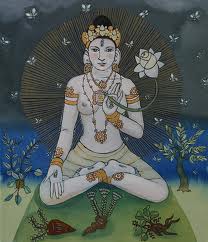 In Buddhism a symbol for wisdom is youth. I used to think this meant that although we may be inexperienced in our youth we can still carry wisdom, which is perhaps true. But perhaps it also means that by not bogging down the first three layers of the body, The Wisdom Body can help to keep us looking and feeling youthful and in touch with our Bliss Body. I can only speak from experience that since beginning this cleanse I have more energy and feel better than I can ever remember. It’s well worth what I have given up for all the energy and radiance gained.
In Buddhism a symbol for wisdom is youth. I used to think this meant that although we may be inexperienced in our youth we can still carry wisdom, which is perhaps true. But perhaps it also means that by not bogging down the first three layers of the body, The Wisdom Body can help to keep us looking and feeling youthful and in touch with our Bliss Body. I can only speak from experience that since beginning this cleanse I have more energy and feel better than I can ever remember. It’s well worth what I have given up for all the energy and radiance gained.
 I realized that I had never read them all the way through in one sitting before. This really shouldn’t be that difficult considering that The Yoga Sutras are actually like a recipe book.
I realized that I had never read them all the way through in one sitting before. This really shouldn’t be that difficult considering that The Yoga Sutras are actually like a recipe book. k for enlightenment in the past, but I typically find myself sidetracked by the commentary on one of the aphorisms, or I just get tired, and I fail to make it all the way through.
k for enlightenment in the past, but I typically find myself sidetracked by the commentary on one of the aphorisms, or I just get tired, and I fail to make it all the way through.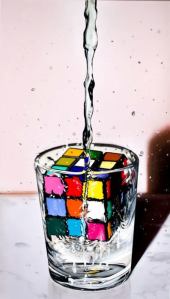 If the first sutra/ thread/ ingredient, sets up what you are going to be making, the second sutra defines what it will look like.
If the first sutra/ thread/ ingredient, sets up what you are going to be making, the second sutra defines what it will look like.  The next logical question is, why would I want to do that? This is described in the third line of text… And so it goes throughout the manual. It is a drum-roll of answers being questioned and questions being answered.
The next logical question is, why would I want to do that? This is described in the third line of text… And so it goes throughout the manual. It is a drum-roll of answers being questioned and questions being answered. We get in, turn on the engine, put it in drive, and hit the gas. There are all sorts of great gadgets like brakes, blinkers, radios, cruise control and windshield wipers. These things come standard in any Toyata, Chevy or Mercedez. So what if you happened to find yourself in some sort of a James Bond mobile? Would it be possible that you wouldn’t even know that your car could actually fly? Become invisible? Travel faster than the speed of light? Coast on water? Because you didn’t know where to look for these buttons and you were satisfied with seat-warmers?
We get in, turn on the engine, put it in drive, and hit the gas. There are all sorts of great gadgets like brakes, blinkers, radios, cruise control and windshield wipers. These things come standard in any Toyata, Chevy or Mercedez. So what if you happened to find yourself in some sort of a James Bond mobile? Would it be possible that you wouldn’t even know that your car could actually fly? Become invisible? Travel faster than the speed of light? Coast on water? Because you didn’t know where to look for these buttons and you were satisfied with seat-warmers?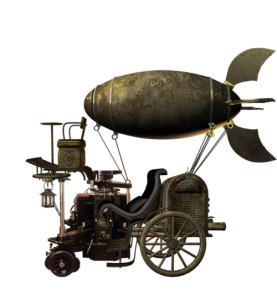 these bodies that we are inhabiting may have some extra special features that we aren’t aware of, but with a little searching we may discover that we all have a little super-power within us just waiting to be discovered…
these bodies that we are inhabiting may have some extra special features that we aren’t aware of, but with a little searching we may discover that we all have a little super-power within us just waiting to be discovered…



